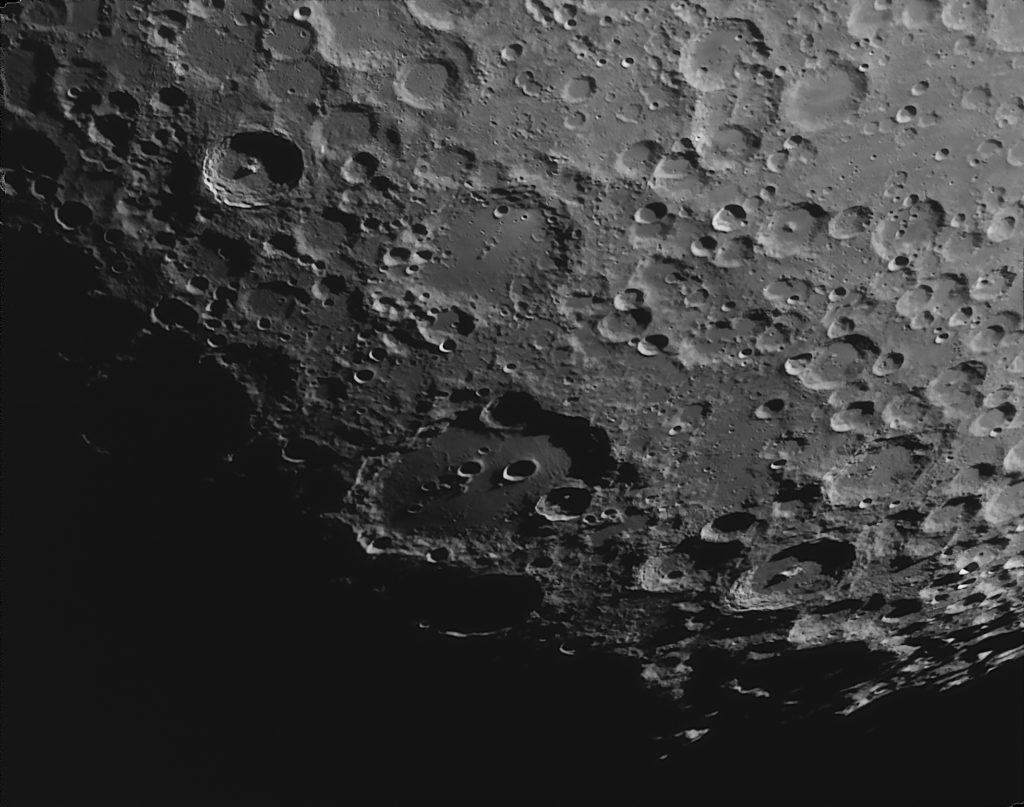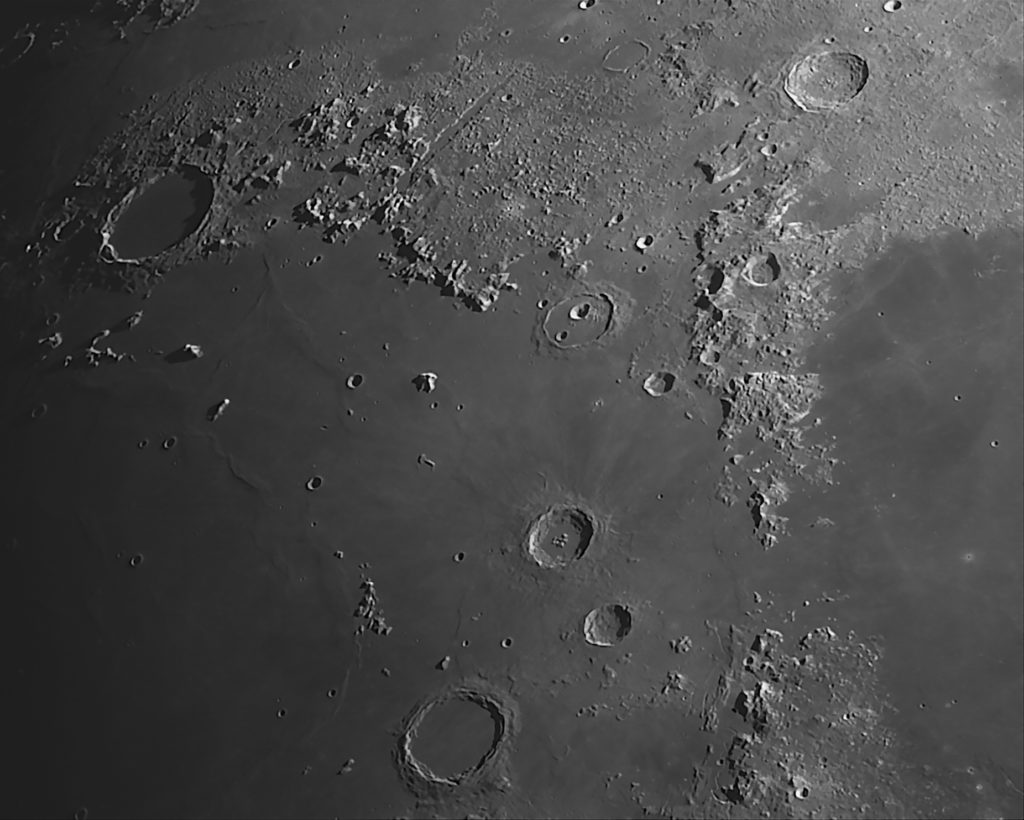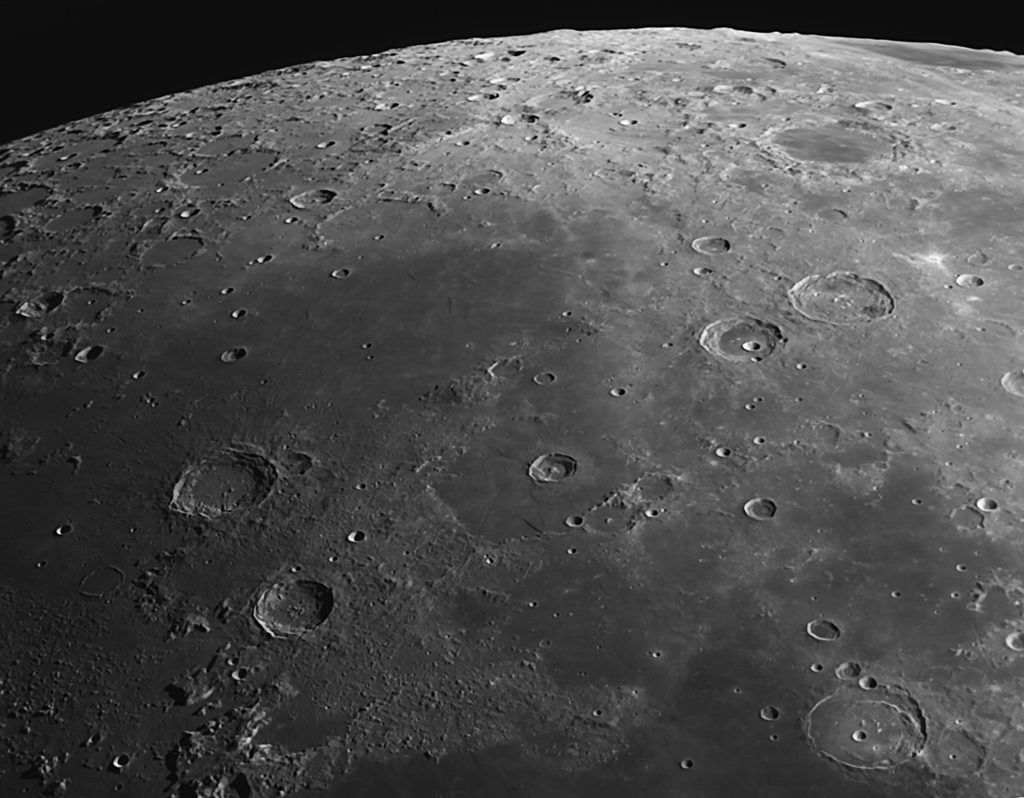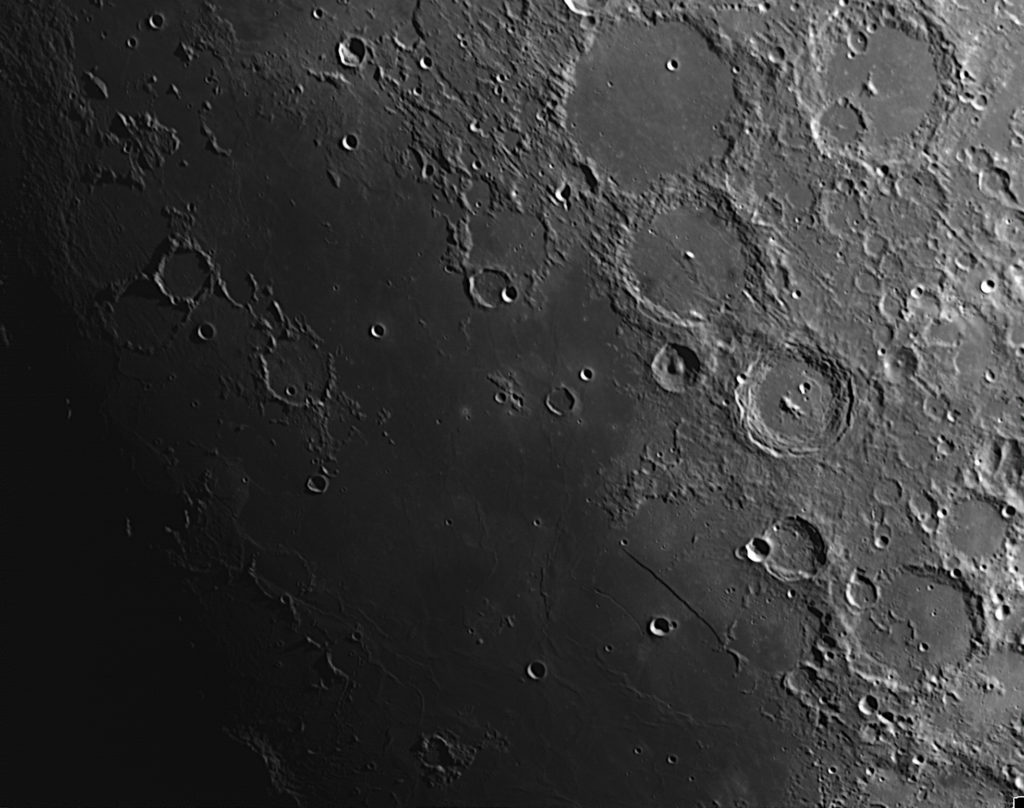Virtually everyone on Earth has seen the moon. It is far-and-away the most common way people everywhere experience the night sky. For millennia, songs have been written about the moon and its influence on humanity. “Claire de Lune” and “Moon River” are a couple of my personal favorites. There are legends involving the moon’s effect on people, particularly the full moon. It appears in ancient petroglyphs. Many cultures consider it a goddess and worship it. Yet, for all that attention, we have learned about its surface, its composition, and its history only within the last few hundred years. Today, even with relatively modest equipment, we can see the lunar surface in breathtaking detail. This month we celebrate the 50th anniversary of the Apollo 11 landing, with four images of the moon.

Let’s start with Clavius. This crater is one of the largest on the moon, and is situated near the moon’s south pole. The result of waves of asteroid bombardment over the last couple of billion years, this region is exceptionally rugged. While much of the near side of the moon is covered by relatively smooth “seas” of lava flows, no such geologic activity occurred in this area. This left the shattered and churned upper crust intact here. Even in this image, we can see thousands of craters large and small, young and old, crowding and overlapping each other, evidence of the intensity of the bombardment so long ago.

Mare (mar-ay) Imbrium is a gigantic lava flow, easily visible to the naked eye when the moon is full. This image shows about a third of it. To early astronomers, it looked like a sea, thus the name “Mare,” latin for “sea.” If it is a sea of anything, it’s a sea of lava, now hardened, the result of the impact of a very large asteroid. This asteroid was almost large enough to shatter the moon itself. Fortunately for us, that didn’t happen. Ranges of mountains surround Imbrium. They are essentially the walls of the crater formed by the impact. We can tell this feature is relatively young because has relatively few craters in it. Astronomers piece together the timeline of the moon’s surface by “crater count” studies. Fewer craters means that region is younger than another region with more craters.

Like Earth, the moon has poles. They are defined by the moon’s rotational axis, which is fairly well aligned with our own. This is one of the remarkable coincidences that leads us to believe the moon was once part of the earth. Because of this alignment, it is impossible to study the poles from earth. We can see where they are, but their features are hidden. With the arrival of the Lunar Reconnaissance Orbiter in 2009, we finally got our first glimpses of the polar terrain. That doesn’t keep me from taking pictures of the area though. We can see high crater rims silhouetted against space, and brilliant rays emanating from the region, evidence of large impacts there. Scenes like this make me feel like I’m orbiting the moon myself.

Last, but not least, we come to my absolute favorite region: The Straight Wall and its surroundings. Visible just right of lower center, this feature is only visible for a few days each month, as the sun is just rising or setting there. In images and telescopes, it looks like a sheer cliff, almost as straight as an arrow, bisecting the remains of a ruined and flooded crater. In fact, it is a relatively gentle slope of perhaps ten degrees, that is still shadowed until the sun is at least that high in the sky. It owes its straightness to the geology underneath it. It lies on the edge of a lunar sea, Mare Nubium. The impact that created this mare fractured the crust giving the molten lava beneath a path to the surface. As it filled in the basin created by the impact, it cooled and hardened. As it cooled, it contracted, which pulled the surface downward in places. The Straight Wall is one of those places.
It’s remarkable to me that we can see the moon’s surface this well. It’s about 250,000 miles away at any given time, and when you think about it, that’s a long way. But it’s even more remarkable to me that we’ve actually been there. I could go on for a long time about my own experiences and how the Apollo program affected me, but suffice it to say here I am, 50 years later, still in love with the heavens!